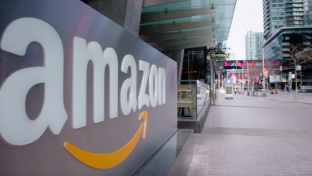Amazon searching for mass grocery format worth expanding
In his second letter to shareholders, Amazon CEO Andy Jassy stressed that grocery is a big growth opportunity for the company, even indicating that it’s working hard to identify and build the right mass grocery format for Amazon to develop.
Jassy acknowledged that the company has built a somewhat unusual, but significant grocery business over nearly 20 years, starting with products typically found in supermarket aisles that don’t require temperature control, such as paper products, canned and boxed foods, candy and snacks, pet care, health and personal care, and beauty.
[Read more: “Amazon: We're not exiting the private-label space”]
“However, we offer more than 3 million items, compared to a typical supermarket’s 30,000 for the same categories,” wrote Jassy. “To date, we’ve also focused on larger pack sizes, given the current cost to serve online delivery. While we’re pleased with the size and growth of our grocery business, we aspire to serve more of our customers’ grocery needs than we do today.”
To do so, Jassy said that Amazon needs a broader physical store footprint, beyond its growing Whole Foods Market banner.
“Over the past year, we’ve continued to invest in the business while also making changes to drive better profitability,” wrote Jassy. “Whole Foods is on an encouraging path, but to have a larger impact on physical grocery, we must find a mass grocery format that we believe is worth expanding broadly. Amazon Fresh is the brand we’ve been experimenting with for a few years, and we’re working hard to identify and build the right mass grocery format for Amazon scale.”
Jassy affirmed that Amazon would “go big” on brick-and-mortar grocery stores back in February, following a pause in operations for some Amazon Fresh locations. In an interview with the Financial Times, he noted that the e-commerce company’s foray into on-the-ground food retailing has been slowed by a series of external circumstances, citing lack of normalcy in the business environment.
[Read more: “Amazon cuts 9,000 more U.S. jobs, bringing 2023 total to 27,000”]
Jassy told the publication that Amazon’s retail teams are working to enhance the Amazon Fresh operation. “We’re experimenting with selection, checkout formats, assortment, price points,” he said. “I’m encouraged we have several that I think are promising.”
Amazon’s leader expressed similar sentiments during the company’s latest earnings call on Feb. 3. “We think grocery is a really important and strategic area for us. It’s a very large market segment, and there’s a lot of frequency in how consumers shop for grocery,” he said at the time.
Meanwhile, Amazon celebrated a successful fourth quarter. For the quarter ended Dec. 31, its North American segment sales increased 13% year over year to $93.4 billion — a 14% increase, excluding changes in foreign exchange rates.
Additionally, for full-year 2022, Amazon reported that its North America segment sales increased 13% year over year to $315.9 billion and operating loss was $2.8 billion, compared with operating income of $7.3 billion in 2021. Net loss was $2.7 billion in 2022, or 27 cents per diluted share, compared with net income of $33.4 billion, or $3.24 per diluted share, in 2021.
The release of the company’s earnings report preceded headlines of Amazon’s massive layoffs in the tech sector. Most of the affected employees are in the cloud computing, human resources, advertising and Twitch groups.
Amazon will hold its next virtual annual meeting of shareholders on May 24.
The first certified-organic national grocer, Austin, Texas-based Whole Foods has more than 500 stores in the United States, Canada and the United Kingdom.




